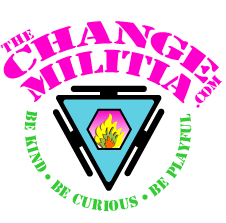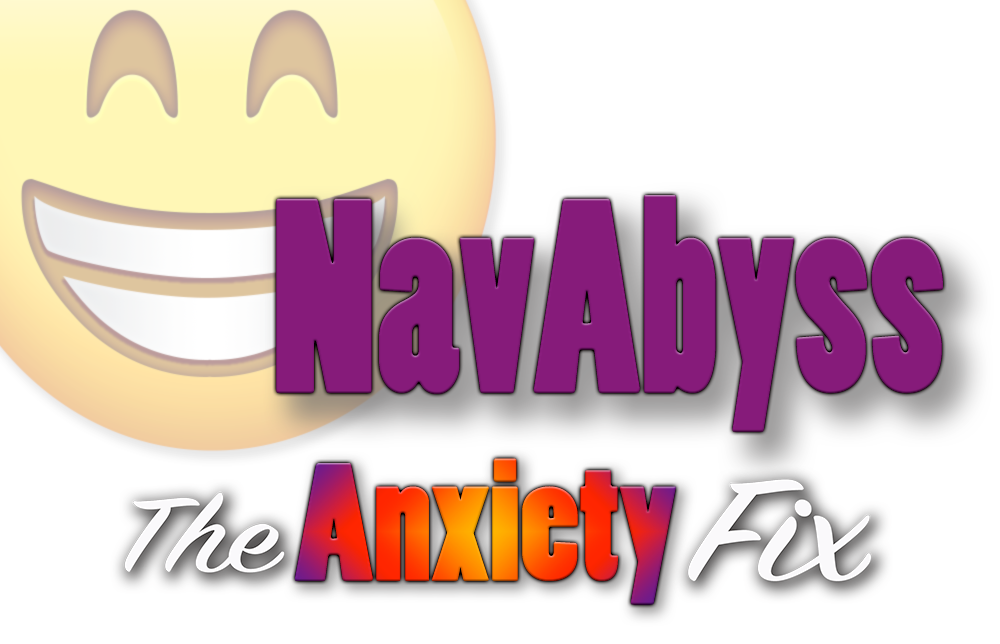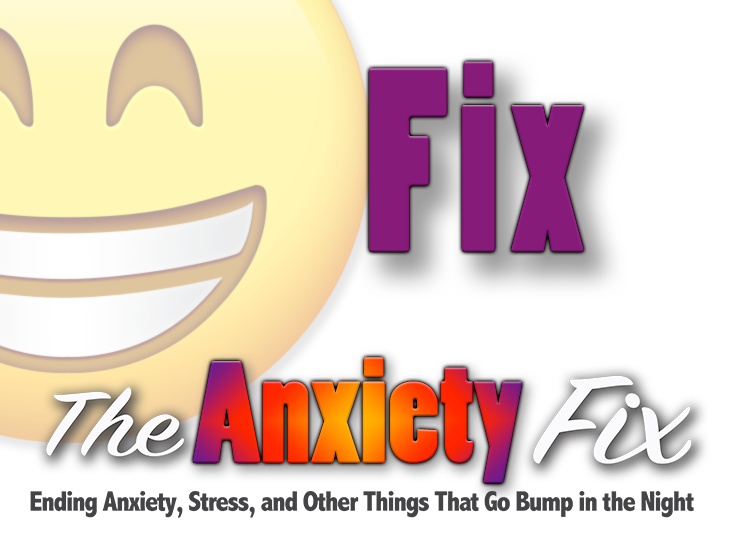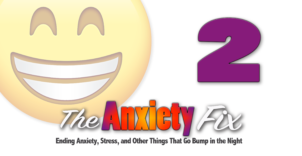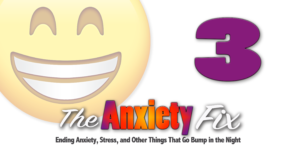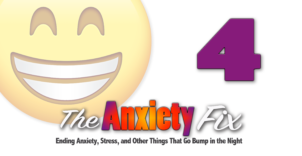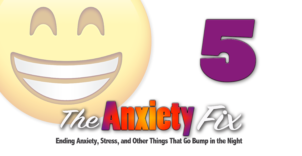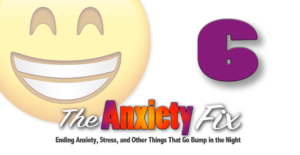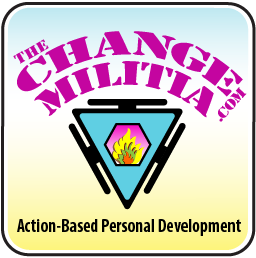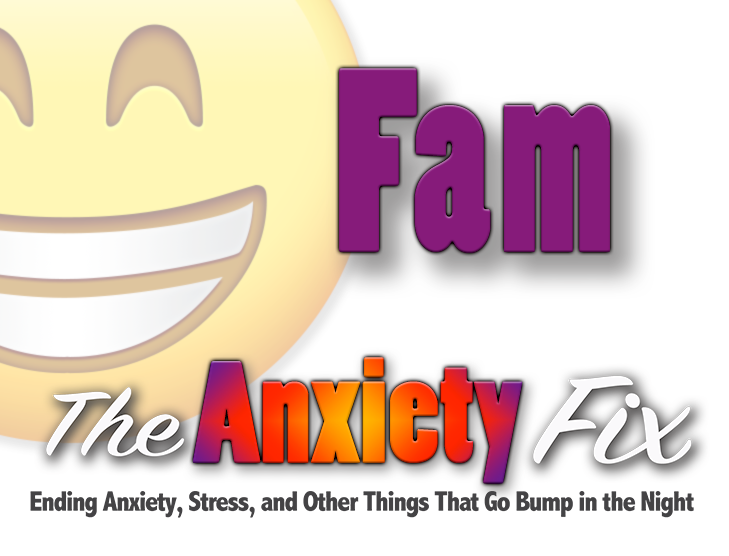
Here is one of the ways to settle and reset your system when you are anxious, stressed, or feeling overwhelmed.
Do one of the Five F’s movements when it feels like you have driven off the cliff or are about to. Remember to start with the Navigating the Abyss video to give you background and context.
The five major ways you react to fear are fight, flight, freeze, fix, and familar. Most of these happen habitually. They are triggered by your subconscious mind without you even realizing it’s happening until you’re right in the middle of it.
Familiar reactions will include wanting to replicate, reproduce, or revisit some previous experience. Familiar fears look to return to the known. When you are drawn to an existing pattern or habit, you are trying to satisfy a familiar fear by doing something habitual. You are looking to arrange or configure people, places, relationships, or situations in a way that is recognizable and feels safe.
Choose this Familiar sequence when you want to replicate or fall back to something habitual. Use it when you want other people to do things they have done before, or you want things, situations, places, thoughts, and emotions to repeat a previous pattern.
Familiar will feel like you want to do something you have done before.
Five F’s Familiar Reset Sequence
Detect Fear
The first step is to realize you want to rearrange things into a familiar pattern, that the unknown is uncomfortable. If you feel your energy ramping up toward anxiety, your subconscious mind will look for a familiar fear pattern to assign. Your fear signal may typically be familiar or it may be one of the others and the desire to return to the familiar may only come up with certain people, places, or situations.
Acknowledge Familiar Signal
Your fear triggers will be habitual. In every situation, you will have a defensive pattern that is waiting to be triggered. When you feel your energy starting to build and it starts to feel uncomfortable, feel for the specific fear signal your subconscious mind is demanding.
If it is familiar, your mind will be telling you that you should rearrange the current components (people, places, relationships, or situations) in a recognizable reproduction of some previous experience or in-line with a strongly held belief system. You will want to repeat some past pattern that has successfully returned you to a feeling of comfort … and away from your current discomfort.
Name Preferred Action
After you detect fear rising in your system, decide what you would rather be doing or feeling. The Familiar fear signal is the most insidious. For most people, this will be the default fear reaction. Your subconscious mind will always prefer something it has survived over something that is unknown or uncontrollable.
Welcoming new experiences will help reconfigure away from the Familiar anxiety and toward finding new experiences. Choosing to find new healthy choices creates a trajectory your energy will try to accommodate. Trying to replicate limit your options, not replicating allows for growth and the feeling of expansiveness.
(After each step, listen to your internal signals. If it feels like you are ready to reengage with your intended tasks, shift to getting things done. If you still feel hesitant or resistant, go on to the next step.)
Indulge Familiar Demand
After you determine that you feel the need to repeat some past pattern and have accepted that you can find some exciting new alternative, look for a physical way to indulge the Familiar demand. Give your subconscious mind the feeling of replication without falling into some non-beneficial habit. Find something that has a simple repeating pattern that will match or exceed the amount of energy necessary to deplete the Familiar fear alarm. In the fitness world, this would be called reps (repetitions) or sets.
What you choose will depend on your history, general health, fitness level, and any specific physical limitations. Find something you have confidence in doing. Try to pick something that feels second nature. Maybe something you did as a child, like Jumping Jacks or twisting toe touches. Find something with a memory attached.
You are looking to connect your physical movement to some previous experience, to replicate it. You are looking to mimic and indulge a previous version of yourself. The physical energy expenditure isn’t as important as the mental and emotional connection you make to the remembered event. Relive the remembered feelings of the movement. Immerse yourself in reflection. If you hated or loved your selected movement, feel that.
What you do doesn’t have to be calisthenics. It can be any series of movements that evoke historical thoughts and emotions. If you embarrassed beyond belief when your parents made you Hula on your Hawaiian vacation, then Hula. But remember to evoke that feeling of being mortified.
As you indulge the fear signal with remembered movements, your Familiar anxiety will wane. You are burning up the energy you have stored which satisfies your subconscious mind. If it doesn’t feel like you are getting less anxious, you may not have done a challenging enough movement, you may need to do it longer, or you may have another fear signal (fight, flight, freeze, or fix) that needs to be satisfied. Check-in with what you are feeling. If it still feels like you have anxiety, try something else and redouble your efforts to relive the sensations and emotions.
(Listen to your internal signals. If it feels like you are ready to reengage with your intended tasks, shift to getting things done. If you still feel hesitant or resistant, go on to the next step.)
Redirect Familiar Movement
After it feels like you have exhausted your anxious energy, the next step will be to add an update, a new-and-improved version of your movement. You will be disconnecting for the previous experience and bringing yourself back to the present by creatively adding some new twist (pun intended). If you have been doing Jumping Jacks, you might substitute a forward leg swing, alternate arms, hopping forward, ultra-slow motion, add a scarf in each hand or a screamed affirmation, anything that requires you to focus your mind on the present and start to create new memories. Be creative, think like a product developer that is looking to sell an updated and upgraded version. Add a degree of complexity.
The more you immerse yourself in the re-visioning, the more effective it will be. You will probably have resistance to this. Your mind will try to convince you that you can’t think of anything to do. This might trigger you to want to give up (freeze), you might get angry or frustrated (fight), you might get easily distracted (flight), or you might have some inner negotiation (fix) and tell yourself you will do it tomorrow. Override your mind and find something and then do it with passion. You are looking to invest yourself in the new movement.
If this feels like too much and you can’t seem to get it, start small. Maybe do jumping jacks in the dark, with clenched fists, or in hiking boots.
Transitional Familiar Movement
The next step is to take another step away from the past by adding a series of easy movements. In my notes, I call these complex aerobic movements. The goal is to engage your mind with something new and a bit more complex. Most of your anxiety will be mentally created and fueled. You are looking to occupy your mind with something that uses a larger portion of your mental faculties.
Yoga asanas, Karate katas, Tai Chi forms, modern dance, breakdance, etc. You are looking for something that has a series of movements that require you to concentrate on the form and sequence. Feel free (pun intended) to make up your own. Search YouTube for any of the things above for millions of examples. The key is to find or create something unfamiliar and challenging.
And as with the Redirect movement above, you want to feel the shift from looking back to creating new associations. I exercise using weighted bats called Clubbells. There is an infinite number of ways to utilize them from simple swings to complex multi-part movements. I take them on hikes with me and come up with new movements that I can do and still maintain forward progress. I look for ways to challenge different muscle groups or connect fascial chains. I geek out as I work out. I am constantly looking for new ways to utilize them as tools.
Whatever you find and use for this step, keep in mind that you are looking for something that challenges your existing set of patterns, images about the world, and belief systems. When I hike with the clubbells, people try to figure out what I am doing. Their first guess is always either that I have them as protection from animal attacks or that I am practicing my baseball swing. Seeing me carrying them triggers the familiar response and they try to connect it to something in their mental library.
I usually smile, give them a 20-second explanation, and then let them hold one. Everyone that picks one up is surprised by how heavy they are. That surprise redirects their fear trigger. Their mind goes to work giving a whole new context to the current experience.
You want to test your ability to be spontaneously creative. It isn’t necessary to increase the difficulty. Find something new and then set your intention to be precise and fluid. Feel yourself building momentum toward efficiency, expertise, and originality. As you do your new movements, keep looking for innovation, improvisation, or improvement. Geek out!
Take Action
Ready, set, GO! You are ready to do the thing you named above in the Name Preferred Action. Allow yourself to hold onto the creative and passionate feeling you generated in the previous step and seamlessly flow back into getting things done.
Following the above suggestions will get a lot of energy moving. Use it productively. If you don’t, it will build up in your system and your mind will want to label it as anxiety. As you transition back into your everyday activities, feel the energy and momentum as fuel. Feel it as life force or vitality. Feel it like a superpower. Save the world, do the laundry, paint a masterpiece, create a spreadsheet, go to the gym, but do something beneficial. Do something that has value to you. Use your superpower wisely, don’t let it reconfigure to anxiety.
Your long-term goal will be to go through your day building and expending your energy as efficiently and productively as possible. Every time you feel your energy start to build toward anxiety, start at the beginning of this movement and follow the steps.
The sooner you decide to move away from your anxiety habit, the easier it will be to transition back to productivity. One suggestion would be when you find yourself ruminating, think about what you would do differently today. Instead of getting caught up in the past, transition it to the new and improved version. Create alternatives that you hadn’t considered before.
Anxiety is an excess of energy without a task.
Here is a description of each of your typical fear responses.
Your personality is the sum total of your habits. Every habit has a bunch of moving parts – physical, mental, and emotional. Habits have actions, reactions, and responses. Let’s call these things components.
The most influential components of your habits are the ones attached to your fears. You react in habitual ways to habitual triggers. Those reactions create a cascade of other reactions that form movements, thoughts, and emotions. The sequence of these reactions shape a large part of your personality. Those reactions influence how you interact and respond to potential threats and opportunities.
You are who, what, and how you are based primarily on your habitual reactions. And fear is the main trigger for those habitual reactions nearly 100% of the time.
The five major ways you react to fear are fight, flight, freeze, fix, and familiar. Most of these happen habitually. They are triggered by your subconscious mind sometimes without you even realizing it’s happening. You are probably familiar with fight, flight, and freeze.
Fight fear feels like you want to engage. Fight reactions would include anger, frustration, conflict, contradiction, and altercation (physical, mental, or emotional). Fight will feel like you are trying to create distance by pushing things, peoples, ideas, possibilities, thoughts, energies and emotions away from you. You might also fight external influences. Fight will have lots of active resistance to change.
Flight fear feels like you want to disengage. Flight reactions are things like distancing, running away, distraction, and avoidance. How often have you been chatting and someone inexplicably interrupts or changes the subject? That is a flight response. They fear the potential trajectory of the conversation and seek to move away from it. Every distraction is a flight response. Spacing out and over-talking are flight responses. Flight will be a desire to control change.
Freeze fear feels like you want to stop or limit change. Freeze is expressed as stubbornness, inattention, and shutting down (physically, mentally, or emotionally). Emotionally, men have a greater tendency to use the freeze response than women. When things get a little too intimate, we men tend to forcefully stop our emotions because of a fear of appearing weak or the fear of losing control … or the subconscious fear of not knowing what might happen next. Stagnation is a freeze response. Freeze will feel hard and inflexible. Surrender, submission, quitting, and resignation are freeze responses because they all seek to stop something. Got something in your life that is lifeless and stagnant? If so, there is freeze fear underneath it somewhere.
Fix and Familiar may be new fear responses to you, but they’re equally as common as the first three. You may even find yourself nodding along as you read their descriptions, identifying with how you tend to react in those ways.
Fix fear will feel like you want to control, manage, or manipulate. Fix is what you do to resolve threats, to find some sort of balance. Do you bargain to find some middle ground, remedy, or compromise? Do you placate, justify, or make excuses? Do you frantically try to find a way to make your fear go away by changing something or someone in your environment? If so, you are a fixer. “Yeah, but” is a fix response. Parenting can feel like fixing much of the time. Do you compromise to appease? Are you looking for resolution or avoid conflict? The desire to assuage, placate, coerce, manipulate, seduce, moderate, or convince are fix responses. Fix responses will seek to balance conflicts, threats, and opportunities. Fix will feel like you are trying to balance conflicting or uncomfortable possibilities.
Familiar fear will feel like you need to do something recognizable, a repeat of a pattern.Familiar is usually your desire to physically, mentally, or emotionally reproduce or replicate something in hopes of having a known result. Habits will always have some aspect of familiar – the desire to replicate some past event and the feelings, thoughts, or emotions that resulted. Do you go to a gym or brewery after a particularly unpleasant day with the hope that it will reduce your stress because it has worked before? Doing Crossfit or yoga to lessen your stress is a pattern. Getting drunk regularly to mentally and emotionally escape is a fear response that replicates past patterns. Exercise and inebriation may work in the short term but don’t address the underlying pattern and dysfunctional habits. Exercise is healthier than getting drunk, but both are addressing the symptoms and not the cause. (Addressing the cause would be changing the factors that contributed to your shitty day.)
Do you want to completely eliminate anxiety, stress, and overwhelm? If so, then follow the steps in this program and spend enough time on each to really get a feel for them. Reach out with any questions.
When you are ready, check out our other program, The Change Militia. It is an action-based personal development program. You are going to need to do something with all the energy you are going to free up after you conquer your anxiety. The Change Militia will help you focus on what is important, achieve your goals, and keep you balanced and energized.
Our primary program, The Change Militia, is a subscription-based program offering daily concepts, movements, meditations, and things to focus on to help you supercharge your personal growth.
It is action-based with an amazing community of people. If offers a go-at-your-own-pace model to help you maximize your potential, increase your happiness, and find greater fulfillment. There is also a group call every week to help you relate others’ experiences to your situation. Click the image above for more information and to sign-up.
